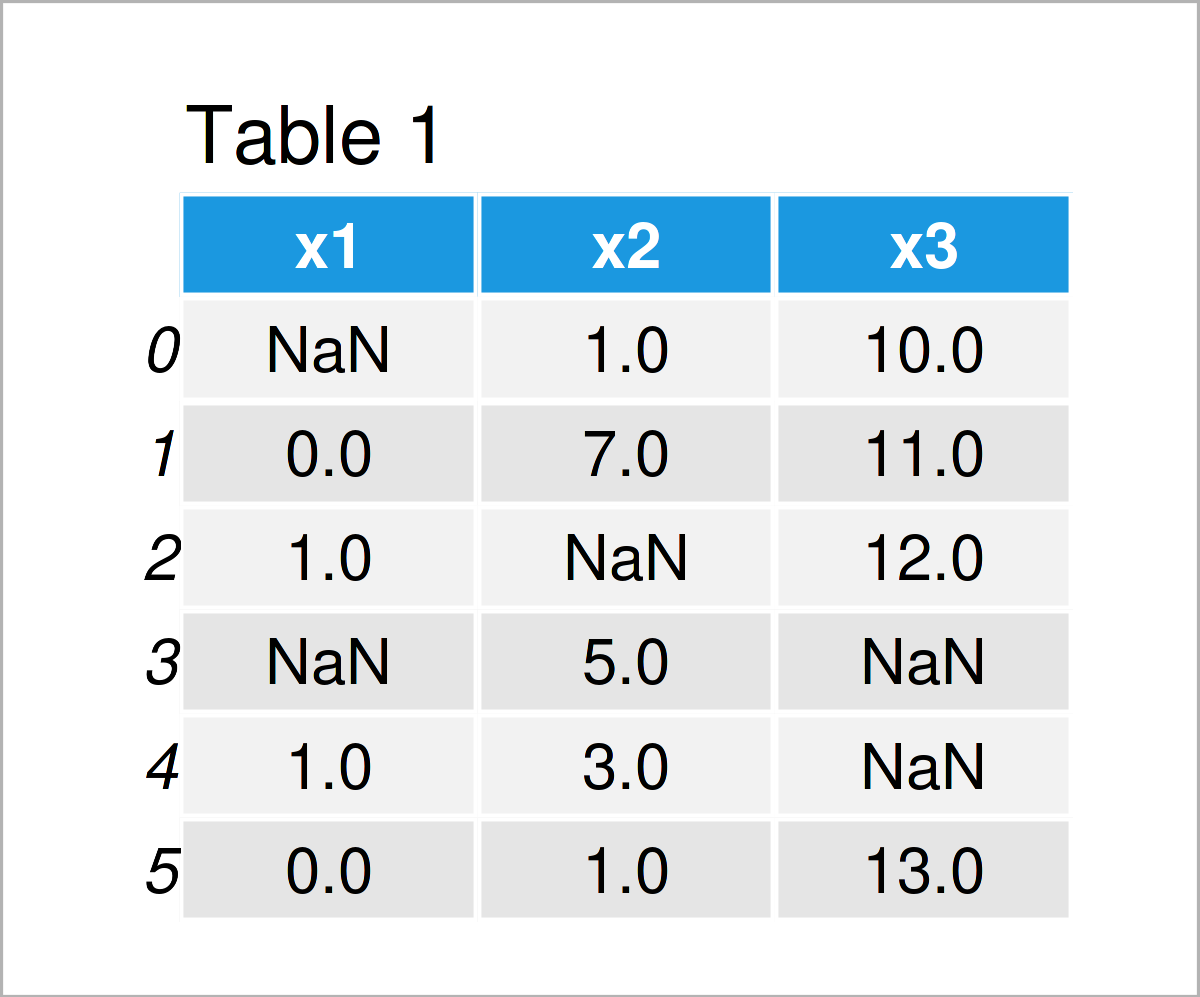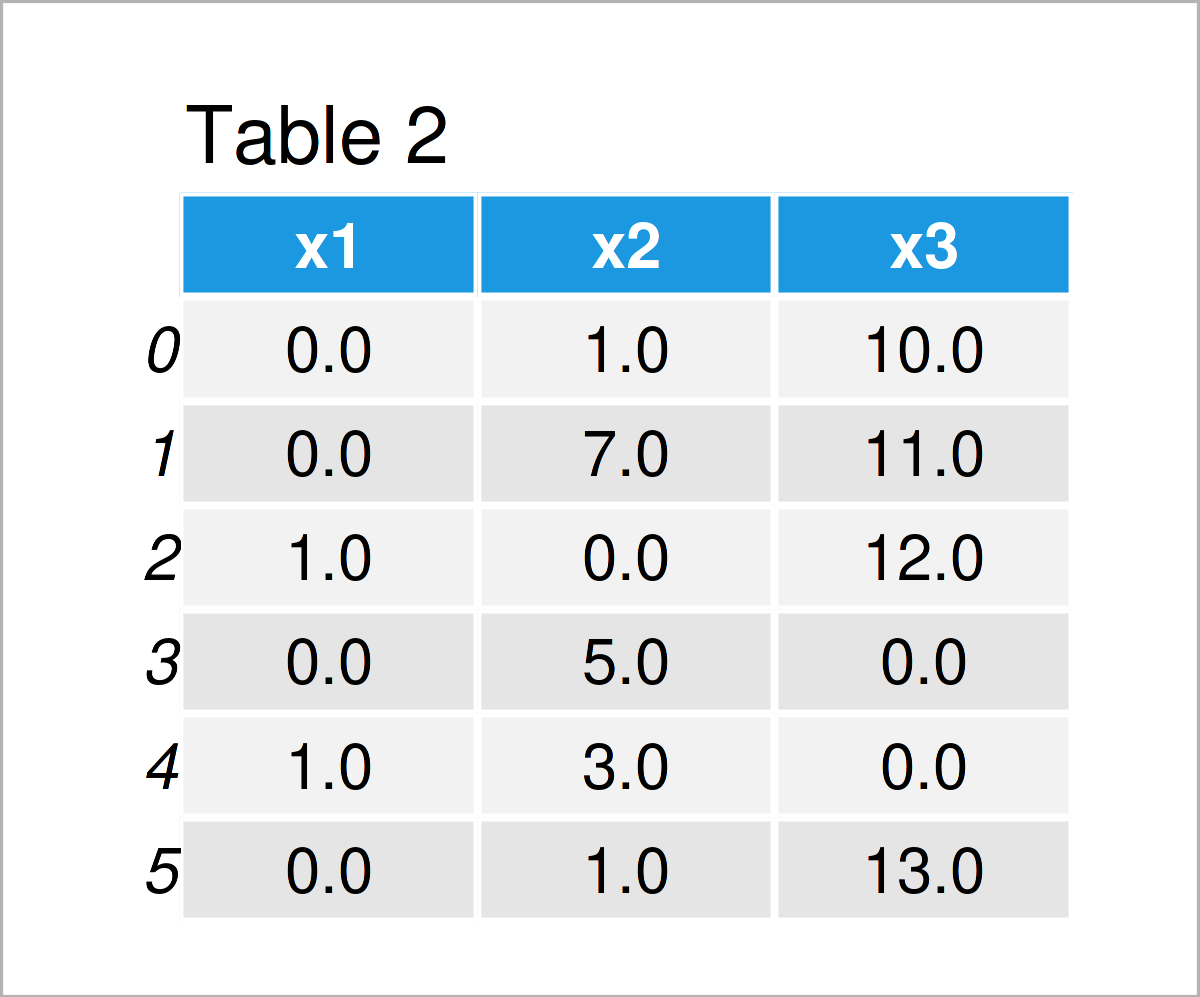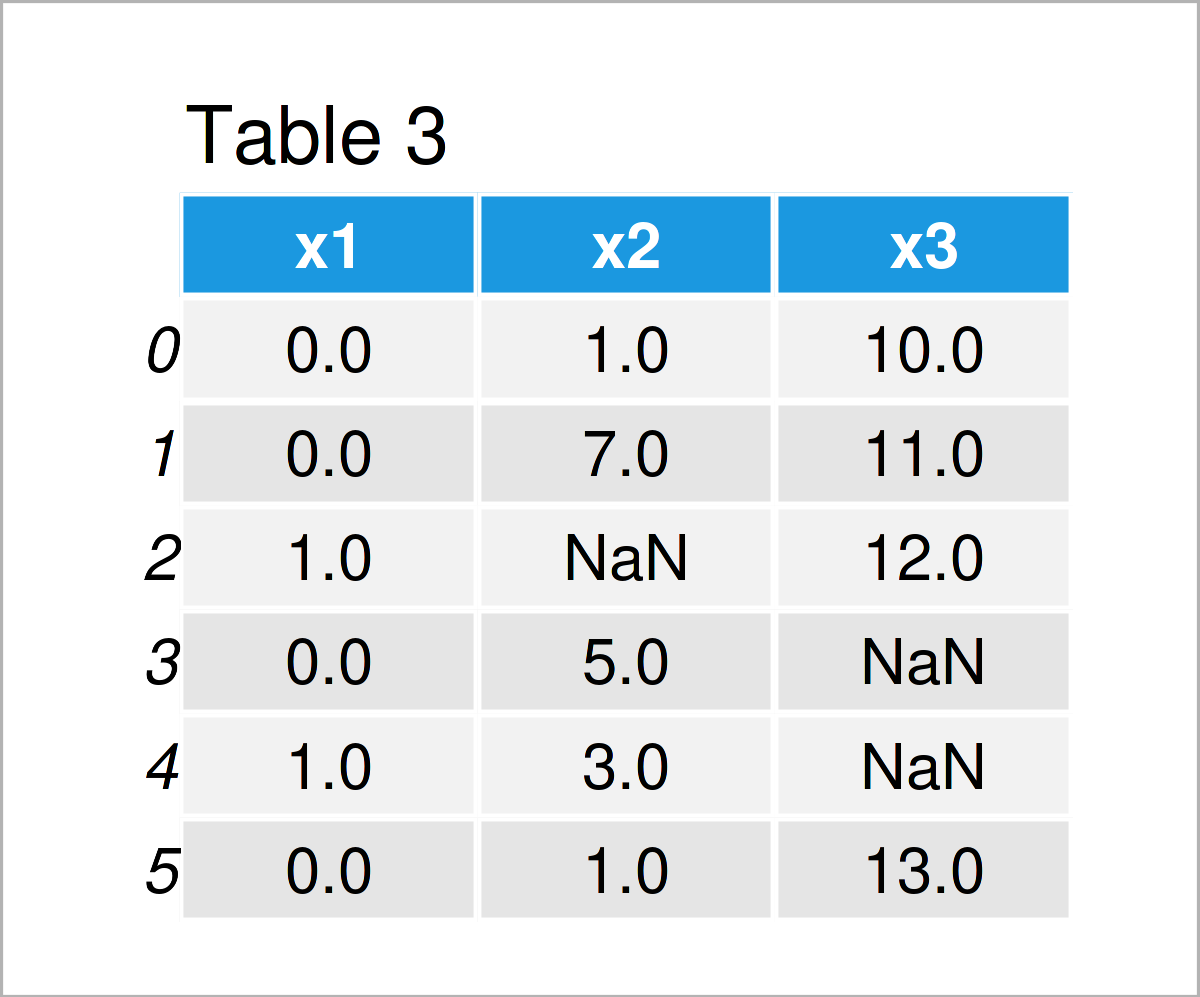Replace NaN with 0 in pandas DataFrame in Python (2 Examples)
In this tutorial you’ll learn how to exchange NaN values in a pandas DataFrame by 0 in the Python programming language.
The page looks as follows:
Let’s dive into it:
Exemplifying Data & Software Libraries
We first need to load the pandas library, to be able to use the functions that are included in the library:
import pandas as pd # Import pandas
The following data will be used as basement for this Python programming tutorial:
data = pd.DataFrame({'x1':[float('NaN'), 0, 1, float('NaN'), 1, 0], # Create DataFrame 'x2':[1, 7, float('NaN'), 5, 3, 1], 'x3':[10, 11, 12, float('NaN'), float('NaN'), 13]}) print(data) # Print example DataFrame

Have a look at the previous table. It shows that our example data is constructed of six rows and three columns. All of these columns contain NaN values.
Example 1: Convert NaN to Zero in Entire pandas DataFrame
In Example 1, I’ll explain how to replace NaN values in all columns of a pandas DataFrame in Python.
For this task, we can apply the fillna function as shown below:
data_new1 = data.fillna(0) # Substitute NaN in all columns print(data_new1) # Print DataFrame with zeros

By executing the previous code we have created Table 2, i.e. a new pandas DataFrame called data_new1 that contains zeros instead of NaN values.
Example 2: Convert NaN to Zero in Specific Column of pandas DataFrame
In Example 1, we have exchanged all NaN values in each column of our pandas DataFrame.
The following Python syntax demonstrates how to convert only the NaN values of one specific variable to 0.
Have a look at the Python syntax below:
data_new2 = data.copy() # Create copy of input DataFrame data_new2['x1'] = data_new2['x1'].fillna(0) # Substitute NaN in single column print(data_new2) # Print DataFrame with zeros in single column

After running the previous Python programming syntax the DataFrame shown in Table 3 has been created.
As you can see, we have only replaced the NaNs in the column x1.
Video & Further Resources on this Topic
I have recently released a video on my YouTube channel, where I explain the Python syntax of this article in some more detail. You can find the video below:
Would you like to learn more about the handling and the substitution of NaN values in a pandas DataFrame by the value 0? Then I recommend watching the following video on the YouTube channel of Minsuk Heo. He shows similar examples as illustrated by the Python programming codes of this tutorial in the video.
In addition to the video, you might want to have a look at the other tutorials on this website. Some articles about the substitution of NaN values in a pandas DataFrame by the value 0 are shown below:
- Replace Blank Values by NaN in pandas DataFrame in Python
- Replace NaN by Empty String in pandas DataFrame in Python
- Check If Any Value is NaN in pandas DataFrame in Python
- Operate on pandas DataFrames in Python
- Manipulate pandas DataFrames in Python
- Remove Rows with NaN from pandas DataFrame in Python
- Replace NaN Values by Column Mean in Python
- Basic Course for the pandas Library in Python
- Python Programming Language
In summary: At this point you should have learned how to substitute NaN values in a pandas DataFrame by the value 0 in the Python programming language. If you have further questions, please tell me about it in the comments.






